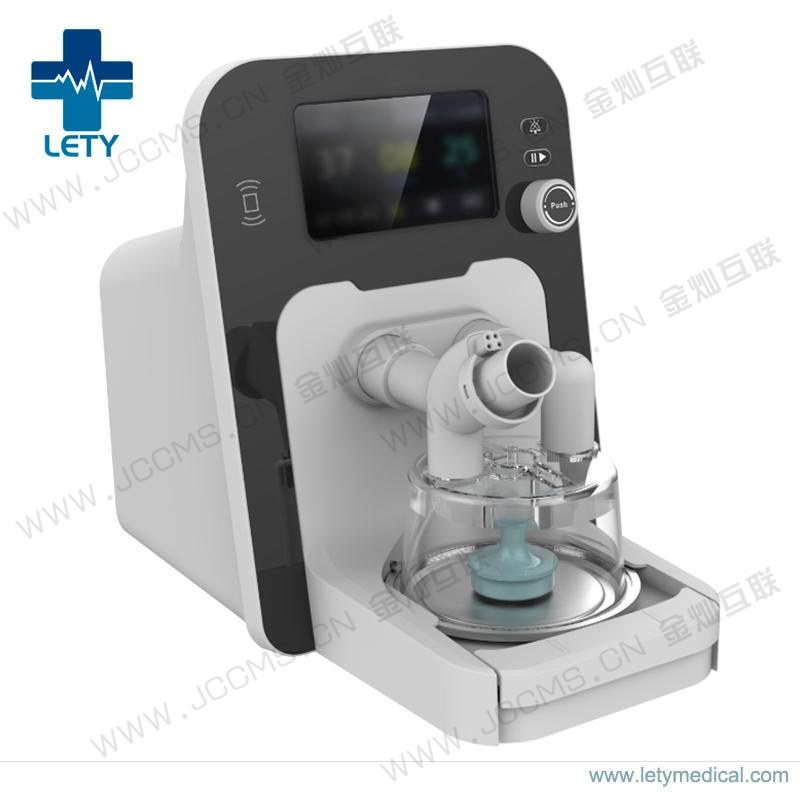

In spite of several benefits though, HFNC may lead to delay in intubation, subjecting the patient to unnecessary risk. The Lu meta-analysis 3 examined nine studies and found the reintubation rate for surgical patients who received HFNC to be lower than patients who received COT (HFNC = 507 COT = 600). “Studies have shown a reduction of re-intubation of patients extubated to HFNC rather than to standard oxygen,” he said. “But the patients with more severe hypoxemia (P:F ratio 3 and determined that HFNC is a good option during post-extubation. However, he pointed out that the FLORALI study did not show a significant difference in intubation rates overall. “Most notable is the study in the New England Journal, the FLORALI study 2 from 2015, that showed a significant decrease in 90-day mortality for patients on HFNC (12%) with acute hypoxemic, not hypercarbic, respiratory failure compared to the standard oxygen therapy (23%) or noninvasive ventilation (28%),” he said. Multiple studies have been conducted that demonstrate the clinical benefits of HFNC, according to Chun. “The HFNC provides heated and humidified oxygen that can decrease airway inflammation, decrease airway resistance and maintain mucociliary function for secretion clearance.” “HFNC is able to provide high levels of both oxygen (up to 100% FiO 2) and high levels of flow (up to 60 LPM),” he said. Clinical Uses of HFNCĪccording to Chun, HFNC has multiple mechanisms of action that make it effective for patients with respiratory failure. However, Chun emphasized that HFNC should not be used as a substitute for intubation and mechanical ventilation.įor patients with respiratory failure who have a Do Not Resuscitate/Do Not Intubate directive (DNR/DNI) in place, HFNC can offer some support and relief without violating the patient’s order, Chun explained. “It is useful for patients who need additional support but do not need urgent mechanical ventilation/intubation.”Īdditionally, HFNC is best used for respiratory failure patients who need more support, specifically FiO 2 and flow, than nasal cannula can provide. Our most common use of HFNC is for acute hypoxemic respiratory failure both in and out of the ICU,” he said. “HFNC is excellent for patients with respiratory failure due to pneumonia. “Manufacturing companies of HFNC have created different sized nasal prongs to accommodate premature neonates to adults, with varying associated flow rates,” he said.Ĭhun noted that HFNC may be indicated for a wide spectrum of diseases and processes that include acute hypoxemic respiratory failure, acute hypercarbic respiratory failure, post-extubation, pre-intubation oxygenation, acute heart failure and sleep apnea. Chun, assistant professor, Division of Pulmonary, Critical Care and Sleep Medicine, Department of Medicine, Icahn School of Medicine at Mount Sinai, explained that although initially developed for neonates, HFNC devices have come into widespread use for adult patients. The study also pointed out that HFNC devices offer other significant benefits over traditional oxygen delivery systems, including “… maintenance of a constant FiO 2, generation of a positive end-expiratory pressure (PEEP), reduction of the anatomical dead space, improvement of mucociliary clearance and reduction in the work of breathing.” Wide Spectrum Use of HFNC Furthermore, these cannulas were made of softer materials to further reduce friction. As an alternative, cannulas that better fit the diameter of a neonate’s nasal openings were developed.
#Hfnc oxygen skin#
1).According to a 2018 study, HFNC was initially developed for the neonatal population the use of a tight face mask negatively affected blood flow to the skin resulting in pressure sores. Seventeen hours after symptom onset, her mental status returned to alert and repeat brain computed tomography 15 hours later revealed the complete absorption of the pneumocephalus ( Fig. After 6 hours, arterial oxygen partial pressure increased from 73.2 to 472 mm Hg. We decided to employ a noninvasive oxygen device, and oxygen therapy via HFNC at 60 L/min with a fraction of inspired oxygen (FiO 2) of 1 was started ( Fig.

Although the patient was in a stuporous state, vital signs, including respiration, were stable. Brain magnetic resonance imaging confirmed the pneumocephalus ( Fig. Non-contrast brain computed tomography revealed a pneumocephalus at the interhemispheric fissure and the prepontine cistern ( Fig. Routine laboratory tests, including arterial blood gas analysis (pH, 7.449 PCO 2, 45.2 mm Hg PO 2, 73.2 mm Hg and SaO 2, 94.1%), were normal. She was somnolent and confused but other neurological examinations were unremarkable.


 0 kommentar(er)
0 kommentar(er)
